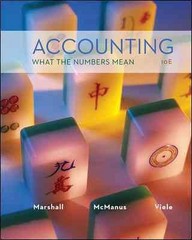Introduction Part A of the case study (traditional costing) AKS Limited makes and sells three different motor parts: AK5001, AKSOOZ and AKSOOS. AKS001* AKSOOZ* AKSOOS* Pictures are symbolic only. I don't have any Copywrite, and these pictures are taken from google for visual representation only. Sales and production figures The total forecast sales and production volume for the three motor parts for 2021 are 15 000 units. Expected sales volumes for each model are shown in the following table. Sales and Production 10 000 3 000 2 000 Volume Direct costs of production Prime costs are the direct materials and direct labour for each product. The estimated prime costs for the three products are shown in the following table. Prime Cost Element AKS001 AKSOOZ AKSOO3 Direct materials per unit $55.00 $85.00 $105.00 Direct Labour per unit $40.00 $30.00 $25.00 Total prime cost per unit $95.00 $115.00 $130.00 Overheads Indirect manufacturing costs are budgeted to be $810 000. These are currently allocated across the three product lines based on direct labour-hours (DLHs), as shown in the following table. Cost driver transaction AKSOOl AKSOOZ AK5003 DLHs per unit 2.00 1.50 1.25 Part B of the case study (activity-based costing) Allocating indirect costs with activity-based costing In your role as management accountant, you have been concerned about the division's manufacturing overhead cost allocation model. You believe that part of the problem AKS has with its existing range of electrical motor products is inaccurate costing. Given the diversity in the range of electrical household products manufactured, AKS has contemplated switching the allocation of indirect manufacturing costs to an ABC system. Therefore, you decide to analyse the usefulness of an ABC system for AKS by applying this approach to the three different motor parts. The analysis of $810 000 of indirect manufacturing costs indicates that they can be classified into four broad cost pools, with four different cost drivers. The budgeted indirect manufacturing costs for the motor parts product line for 2021 are shown in the following table. Indirect manufacturing cost pool Cost driver Annual budgeted costs 1. Labour-related costs Direct labour hours (DLHs) $270 000 2. Machine-related operating costs Machine hours 5350 000 3. Production scheduling and other Production runs $120 000 set-up costs 4. Materials handling costs Materials movements $70 000 Total budgeted costs for all cost pools $810 000 Budgeted production details for the motor part product line for 2021 are summarised in the next table. Cost Driver Transactions m AKSOO3 DLHs per unit 1-25 Machine hours per unit 3.00 Number of production runs 200 Number of materials movements \" 350 Part C of the case study CEO of AKS Limited was in a seminar and heard about the JIT approach. She wondered what JIT is and whether it would be a good approach for AKS Limited, based in Fiji. AKS Limited get the supplies from Australia and New Zealand and a couple of other components from India. CEO has approached you, the management accountant for the company, to analyse the benefits of JIT and its usefulness for the company. Required 1. Use the current indirect manufacturing cost allocation method based on direct labour hours (DLHs) to calculate the budgeted: [total 5 marks) (a) indirect manufacturing cost rate (1 mark) (b) indirect manufacturing cost for each product (2 marks) (c) total manufactured cost per unit for each product. (2 marks) 2. Calculate the budgeted indirect manufacturing cost rate for the four ABC cost pools (total 4 marks) (i) Cost pool 1 labour related costs (1 mark) (ii) Cost pool 2machine-related operating costs (1 mark) (iii) Cost pool 3production scheduling and other set-up costs (1 mark) (iv) Cost pool 4materials handling costs (1 mark) Use the ABC method to calculate the budgeted indirect manufacturing cost per unit for each product range. Calculate the difference in costs between the ABC method and the traditional approach in requirement 1. (one product X 3 marks) (total 9 marks) Write a report to the CEO of AKS Limited explaining the concept ofJIT and whether will it be a good option for the company to adopt the JIT approach. (total 7 marks) *****END OF CASE STUDY 1*****









